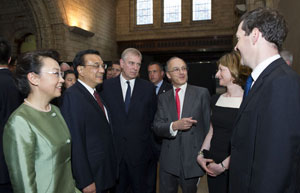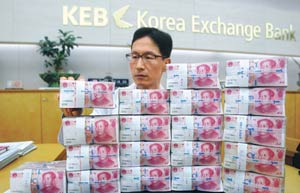China's monetary policy is now weighted more toward loosening, but it is different from US quantitative easing in terms of the scale of liquidity and the monetary policy tools used, economists said.
Unlike the US Federal Reserve, which buys Treasury bonds to boost the economy, China's central bank has been pumping liquidity into the financial market in the past few months by using such monetary policy tools as re-lending, pledged supplementary lending, short-term liquidity operations and standing lending facility.
China Business News reported in July that the People's Bank of China injected 1 trillion yuan ($162 billion) through a three-year pledged supplementary lending facility into the China Development Bank for urban renovation. Several regional banks also have received loans ranging from 500 million yuan to 1 billion yuan from the PBOC at low rates since July, the 21st Century Business Herald reported.
All these efforts suggest that the central bank is tilting toward a slightly looser monetary policy, though the policy remains prudent in general, economists said. But compared with the trillions of dollars pumped by the Fed into the US economy through quantitative easing, the amount injected by China's central bank is much smaller, Ma Jun, chief economist of the PBOC, said on Friday.
Zhou Jingtong, a senior analyst at Bank of China Ltd's Institute of International Finance, said another major difference between the two nations' monetary policies is that China is targeting financial support to weak links of the economy with the goal of economic restructuring, whereas US quantitative easing does not focus on just a few sectors.
The PBOC announced on Friday that it had increased by 12 billion yuan the maximum size of its rediscount operations, a monetary tool that allows it to lend money directly to banks. Banks that receive funds through the rediscounting program are required to lend them to farmers or small businesses. Earlier this year, the central bank cut the reserve requirement ratio twice, trying to reduce financing costs for these sectors.
The government also stepped up financial support to ensure that it will meet its annual target for renovation of rundown areas of cities, which is considered key to China's urbanization.
Yang Tao, a researcher at the Institute of Finance and Banking at the Chinese Academy of Social Sciences, said the targeted measures played an exemplary role by showing that the central bank is making efforts to stimulate the economy. It is important for the PBOC to ensure that it does not go too far because if such measures continue to grow in the long run, monetary policy will shift from being prudent and will cause higher risks.
"The central bank has been injecting an increasing amount of liquidity into the economy, but it has become more vigilant toward certain monetary policy tools such as reserve requirement ratio cuts. So the PBOC is likely to maintain its existing monetary policy or even tighten it slightly in the second half of the year," Yang said.
At the end of June, the country's M2, the broadest measure of money supply, grew by 14.7 percent from a year earlier.
Zhao Xijun, deputy dean of the school of finance at Renmin University of China, said that the laxity of China's monetary policy is just one factor affecting economic growth, which depends on a number of factors, including market conditions as well as the level of workforce, technologies and management. Although the central bank can increase money supply, the growing investment may not lead to a broad market or products with high added value.
"The government has to evaluate each region to see which ones will have significant economic growth if money supply increases in these regions. Once the evaluation work is done, the government can decide where to implement targeted economic stimulus measures in the year's second half," he said.
 |
 |
|
|
|
